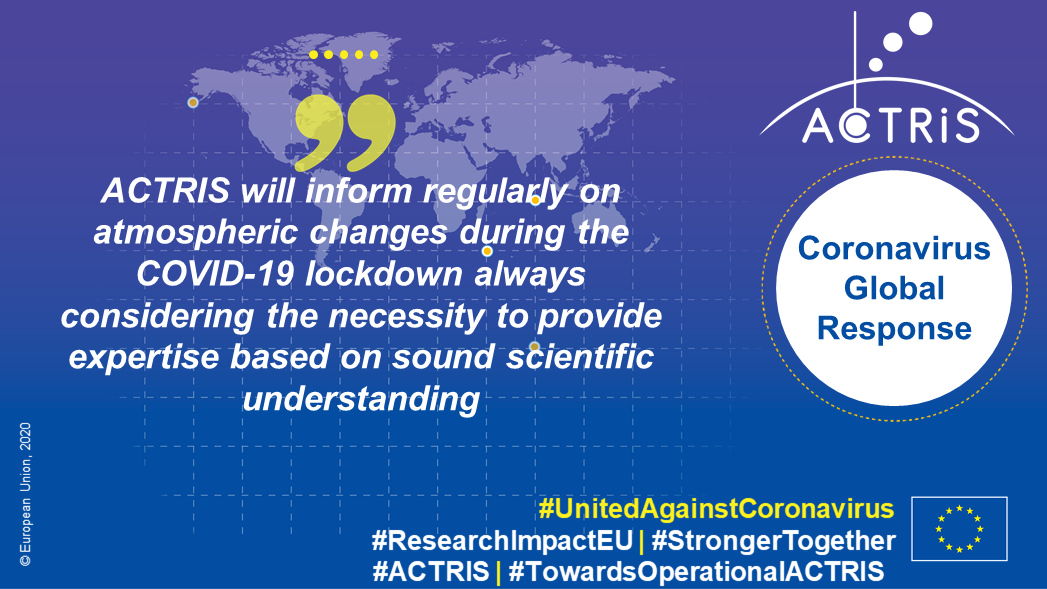National Facilities



Air quality has changed across Europe, and in particularly in Northern Italy, in conjunction with the lockdown implemented in many countries to fight against the outbreak of SARS-CoV-2.
Data from Copernicus Sentinel-5P satellite (1) and from the Copernicus Atmosphere Monitoring Service (CAMS) reanalysis (2) have revealed that nitrogen dioxide (NO2) emissions drastically diminished in the Po Valley as the lockdown halts most of the traffic and industrial activities. Additionally, reductions in particulate matter (PM10) concentrations and low variability have been observed in different regions of Europe.
ACTRIS supports rapid, high-quality data to observe atmospheric composition changes during global health crises.
Researches are interested in obtaining accurate and highly reliable data on air quality which can help understanding, for example, if and how aerosol can be linked with the transport of SARS-CoV-2, changes in upper air meteorological data and in cirrus clouds near the top of the troposphere due to the reduction of air traffic.
ACTRIS is currently gathering atmospheric composition measurements from ACTRIS platforms across different areas in Europe which will directly impact the reliability of air quality studies by providing crucial information on aerosol and trace gases variables during the SARS-CoV-2 pandemics.
The Italian component of the distributed research infrastructure ACTRIS (ACTRIS-IT) is based on a number of different facilities distributed throughout the national territory including observational sites with multiparameter instrumentation, laboratories and experimental simulation chambers. ACTRIS-IT is collecting parallel measurements of atmospheric composition at different altitudes and urbanization contexts in the Po Valley. You can read more about the ACTRIS-Italy contribution to atmospheric monitoring during the COVID-19 lockdown by clicking here (3).
ACTRIS will also prepare specific, user-friendly data sets of the atmospheric observations for various user groups when the lockdown situation is over for further detailed studies and analyse the environmental and societal impacts of the COVID-19 and the closing down of several sectors of society (e.g. transport, industry, services).
ACTRIS actively engages with the wider community of Research Infrastructures in Europe to support joint activities for SARS-CoV-2 research.
ACTRIS is collaborating with the European Strategy Forum on Research Infrastructures (ESFRI) and the Association of European-Level Research Infrastructures Facilities (ERF-AISBL) (4) to create dedicated spaces favoring the uptake of services offered by RIs in support of scientists conducting research related to SARS-CoV-2.
Links:
1 Copernicus Sentinel5P: https://www.copernicus.eu/en/news/news/coronavirus-copernicus-sentinel-5p-reveals-nitrogen-dioxide-emissions-drop-over-italy
2 Copernicus CAMS: https://atmosphere.copernicus.eu/air-quality-information-confirms-reduced-activity-levels-due-lockdown-italy
3 ACTRIS-ITALY contribution: http://www.actris.eu/Portals/46/Outreach/ACTRIS-IT_Contribution%20CoV-SARS-2.pdf?ver=2020-03-27-094352-423
4 ERF-AISBL: https://erf-aisbl.eu/research-infrastructures-offer-for-research-on-covid-19/












